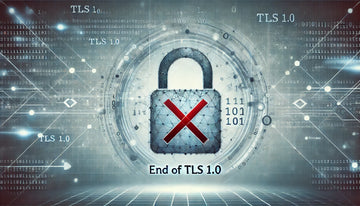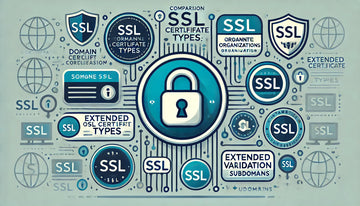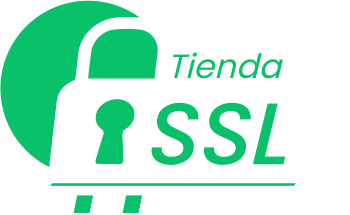In the ever-evolving landscape of cybersecurity, protocols play a vital role in ensuring secure communication over the internet. One of the foundational protocols, TLS 1.0 (Transport Layer Security 1.0), has served the internet community for over two decades. However, as of recent years, the industry has moved to retire this aging protocol. This blog will explore why TLS 1.0 is being deprecated, the implications for businesses and users, and how organizations can prepare for a more secure future.
What Is TLS 1.0?
Transport Layer Security (TLS) is a cryptographic protocol designed to provide secure communication over a computer network. TLS evolved from its predecessor, Secure Sockets Layer (SSL), and has since become a standard for encrypting data between servers and clients, such as browsers, email services, and other internet-based applications.
TLS 1.0 was introduced in 1999 and quickly became a cornerstone of internet security. It facilitated encrypted communications that protected sensitive data from interception, man-in-the-middle attacks, and other threats.
Why Is TLS 1.0 Being Deprecated?
While TLS 1.0 was revolutionary for its time, it no longer meets the security standards required to protect against modern cyber threats. Here are the primary reasons for its deprecation:
-
Vulnerabilities and Weak Encryption:
- TLS 1.0 uses outdated cryptographic algorithms that are now vulnerable to advanced attacks like BEAST (Browser Exploit Against SSL/TLS).
- These weaknesses expose encrypted data to potential interception and decryption.
-
Compliance and Regulatory Requirements:
- Many industry standards, including PCI DSS (Payment Card Industry Data Security Standard), have mandated the discontinuation of TLS 1.0 to ensure higher levels of security.
- Organizations failing to update their systems risk non-compliance, leading to fines and reputational damage.
-
Better Alternatives Available:
- With the advent of TLS 1.2 and TLS 1.3, more robust encryption methods and enhanced performance are now accessible. These newer versions address vulnerabilities present in older protocols and provide faster, more efficient connections.
Timeline of TLS 1.0 Deprecation
The shift away from TLS 1.0 has been gradual, allowing organizations time to adapt. Major milestones include:
- 2018: Major browsers like Chrome, Firefox, and Edge announced plans to deprecate TLS 1.0 and TLS 1.1.
- 2020: Support for TLS 1.0 was officially removed from popular browsers, marking a significant step in phasing out the protocol.
- 2023 and Beyond: Many industries have fully transitioned to TLS 1.2 and TLS 1.3, ensuring compliance with modern security standards.
Implications for Businesses and Users
-
For Businesses:
- System Upgrades: Organizations using legacy systems that rely on TLS 1.0 must upgrade their infrastructure to support newer protocols.
- Customer Trust: Maintaining secure communication channels is critical for preserving customer trust. Outdated security measures can lead to data breaches and reputational harm.
-
For End Users:
- Improved Security: The deprecation of TLS 1.0 ensures that users benefit from stronger encryption, reducing the risk of data theft.
- Potential Compatibility Issues: Users with outdated software or devices may experience compatibility issues when connecting to services that no longer support TLS 1.0.
Preparing for the Future: Steps to Take
To ensure a smooth transition and continued compliance, organizations should take the following steps:
-
Audit Current Systems:
- Identify applications, servers, and devices that rely on TLS 1.0.
- Assess compatibility with newer protocols such as TLS 1.2 and TLS 1.3.
-
Upgrade Infrastructure:
- Update servers, browsers, and client software to versions that support the latest TLS protocols.
- Replace legacy systems that cannot be updated.
-
Test and Monitor:
- Conduct rigorous testing to ensure compatibility and performance after upgrading.
- Use monitoring tools to detect any attempted connections using deprecated protocols.
-
Educate Staff and Users:
- Inform stakeholders about the changes and their benefits.
- Provide guidance on updating software and avoiding insecure connections.
The Future of Secure Communications: TLS 1.2 and TLS 1.3
The retirement of TLS 1.0 marks a significant step forward in enhancing internet security. TLS 1.2 and TLS 1.3 offer numerous advantages:
- Improved Encryption: Stronger algorithms provide better protection against sophisticated attacks.
- Enhanced Performance: Faster handshake processes reduce connection latency, improving user experience.
- Forward Secrecy: Ensures that even if a private key is compromised, past communications remain secure.
These advancements make the internet a safer place for businesses and users alike, underscoring the importance of adopting up-to-date security protocols.
Conclusion
The end of TLS 1.0 is not just a technical milestone but a necessary evolution in the ongoing effort to protect sensitive data and secure online communications. By upgrading to modern protocols and adhering to best practices, organizations can safeguard their digital assets and maintain trust in an increasingly connected world.
For businesses still relying on TLS 1.0, the time to act is now. Embrace the change and ensure your systems are ready for the future of secure communications.













